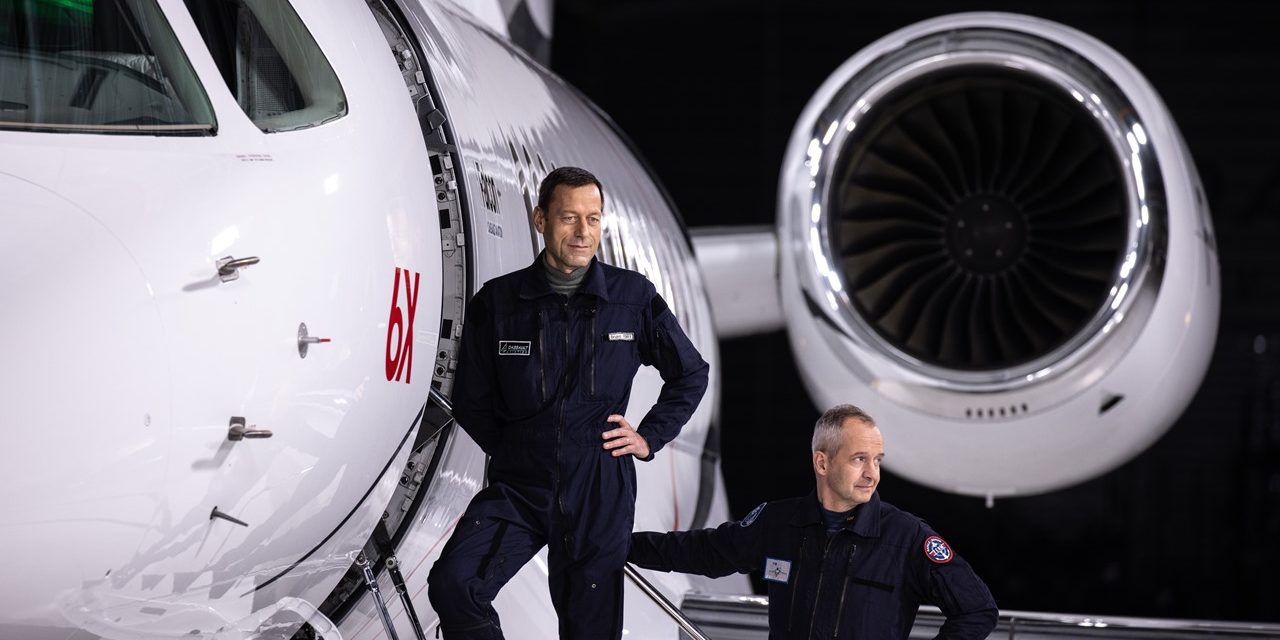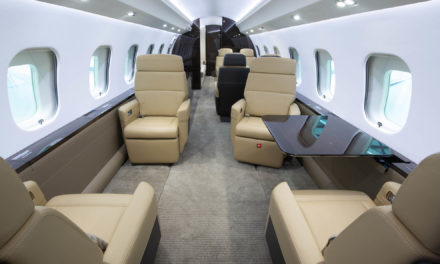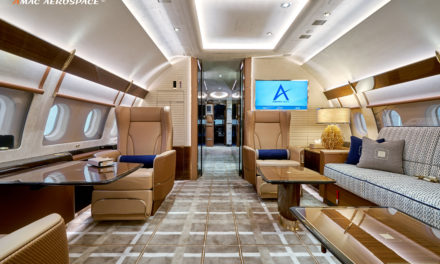By Fred Vergnères
The year 2020 ends on a positive note with the presentation of the “Roll Out” of the Falcon 6X by Dassault. This event was conducted with great fanfare, perfectly choreographed, and gave the aviation industry as a whole a renewed sense of positivity during a rather gloomy period.
Dassault Aviation was able to unveil the Roll Out of its future Falcon 6X twin-engine aircraft on December 8th, without the presence of guests or journalists, but through a live virtual show produced from Dassault’s facilities in Bordeaux Mérignac, France.
Presented from the Lindbergh building by American journalist Miles O’Brien, Eric Trappier, CEO of Dassault Aviation, and Carlos Brana, General Manager of Civil Aircraft, the event provided an opportunity to view the French manufacturer’s new flagship. The aircraft presented, SN/03 (F-WAVE), should carry out the first ground system tests in the coming weeks, with a view to validation before the first flight. For Dassault Aviation, this Roll-Out marks a fundamental step in the program. But it is not the only one. Above all, the Falcon 6X meets a major challenge for the aircraft manufacturer, despite the delay in this segment due to the setbacks of the Falcon 5X, the jet marks the renewal of the range and opens a new industrial era at Dassault.
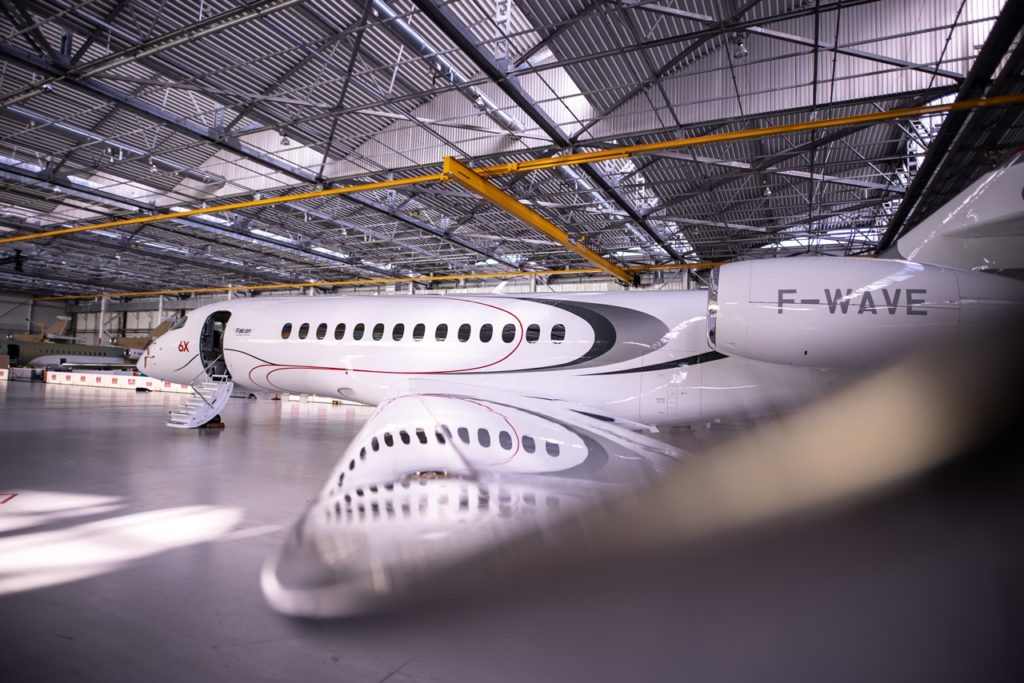
A quick decision
Barely two years after its official launch, the Falcon 6X is one of the most eagerly awaited aircraft on the market. With this program, Dassault has not only demonstrated its ability to meet a very tight schedule, but also to use its incredible flexibility despite the difficulties of recent months with the Covid-19. According to Eric Trappier, Chairman and CEO of Dassault Aviation, “The program is perfectly in line with the initial schedule, in particular thanks to the follow-up with the various partners via the digital tools put in place”. To appreciate this feat of strength, it is worth looking back on the launch of the jet. The decision to launch the new program was made in September 2017, even though Dassault management learned from Safran that the SilverCrest engine would be delayed further and that the Falcon 5X program could not be extended. The challenge is to regain a presence in this market segment, which the French aircraft manufacturer cannot leave to its sole competitor Gulfstream. At the NBAA convention that same year, Dassault Aviation approached Pratt & Whitney Canada (P&WC) to find a replacement engine. A derivative of the P&WC PW800, the PW812D, was proposed by the engine manufacturer and selected by the aircraft manufacturer. The 6X program was launched. With time running out, P&WC engineers start from the previous program and partially redesign a new aircraft, with new specifications, in less than five months. “The PW812D was the closest solution and we optimized an aircraft that could benefit from this more powerful engine. All in a very short period of time,” Trappier said, adding, “With the Falcon 5X, we had a good base and needed to adapt and optimize the aircraft with this new engine. Since this one is more powerful and a little heavier than the SilverCrest, we had to slightly modify the design, especially the rear fuselage. “For those who doubt it, the stakes in the aircraft’s design remain on the engine side. The selection of the Canadian engine, which delivers between 13,000 and 14,000 pounds of thrust, means a return to basics, or at least to familiar territory for Dassault, which already powers the Falcon 2000 and the 7X/8X series with Pratt & Whitney Canada (PWC) engines. The performance of this new engine should not only reduce carbon emissions, but also reduce noise by some 15 EPNd (Effective Perceived Noise (EPNdB)) below the Stage 4 standard. The new-generation engine efficiency is also expected to reduce costs by five percent per flight hour, which the aircraft manufacturer estimates at about $3,700 per flight hour compared to the Gulfstream G500.
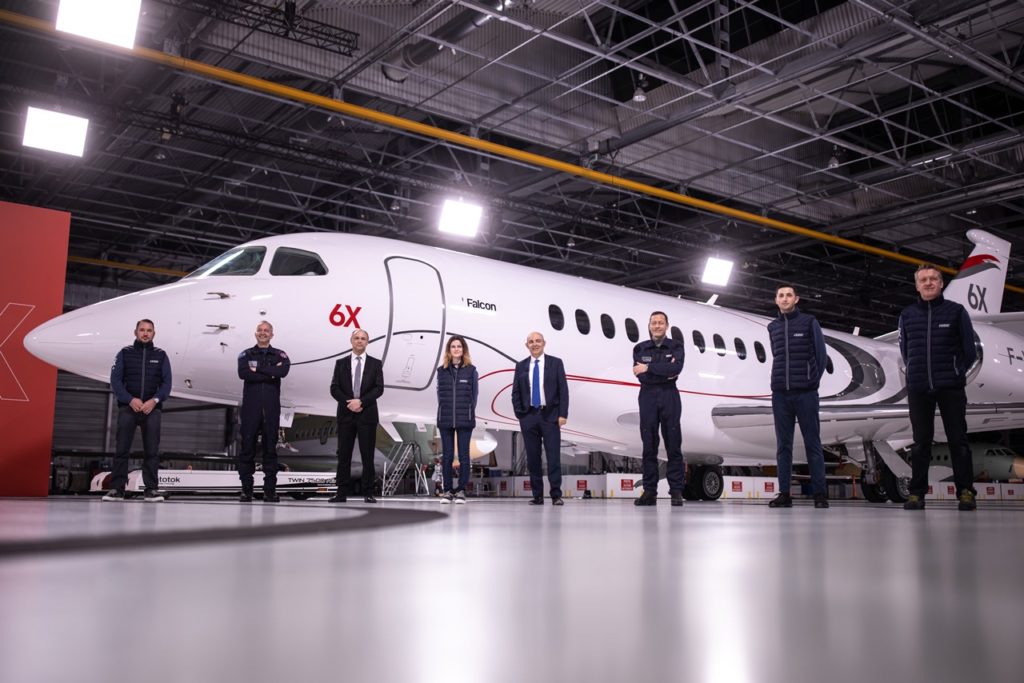
New segment
While the Falcon 6X retains the advantages of its predecessor, notably the width of the fuselage, the comparison stops there. For Dassault, the Falcon 6X is a new aircraft with its own identity, featuring a particularly spacious cabin with a width of 2.18 m and a height of 1.98 m, the widest of any category, especially when compared with the G650. Dassault has therefore taken advantage of this program to offer optimized space that is unmatched in this aircraft segment – it can accommodate up to 16 passengers in an optimal configuration. The Falcon 6X’s interior dimensions and performance make it an exceptional aircraft. While the cabin does indeed rival an aircraft like the G650, the new Falcon’s range of 5,500 nm (10,186 km) compares favorably with that of its direct competitor on the market, the Gulfstream G500. The French company’s new jet will be able to fly from Los Angeles to Geneva or Beijing to San Francisco in a single flight with eight passengers on board. With performances that perfectly match future market trends, the aircraft should be a real success. And all the more so, since the engineers at Saint-Cloud have been working on integrating new technologies and redesigning key components, such as the wing. The wing has been completely redesigned, both in terms of profile and design, to minimize the effect of turbulence. It is equipped with “flaperons”, a contracted term for flaps and ailerons (a legacy of combat aircraft). This system is located in the center of the trailing edge of the wing and allows the aircraft to increase its drag without loss of lift or speed. The “flaperons”, like all the moving surfaces of the wing, will now be managed by digital flight controls. This is a first for Dassault’s civil range, which will enable the Falcon to improve control of steeply sloping, low-speed approaches (109 Kts – 202 km/h) over particularly short terrain. In fact, it is already planned that the Falcon 6X will be able to operate from and to the emblematic London-City airport located within the metropolitan area of the UK capital. The new wing will also be equipped with a new fire safety system. The Falcon 6X will be the first business jet to use a nitrogen-generating system to fill the space above the remaining fuel with an inert gas, providing better protection against flammability. Apart from the structural aspect of the aircraft, innovation also lies at the heart of the cockpit, with the third-generation EASy digital avionics on a Honeywell Primus Epic base, already in service on the 8X. The 6X will also be offered with the FalconEye system developed in collaboration with Elbit, combining synthetic vision (SVS) with infrared (IR) vision, as well as the FalconSphere II electronic flight bag (EFB). To perfect its twin-engine aircraft, the manufacturer has also relied on a new maintenance “standard” with the FalconScan system. The FalconScan system, derived from the test facilities, provides real-time diagnosis of all parameters during flight. Linked to computers via an Ethernet network, it continuously measures more than 10,000 parameters on the aircraft, indicating the root cause of any problems. So Dassault has left nothing to chance, and swept a broad spectrum of technological and aerodynamic innovations to design this new flagship.
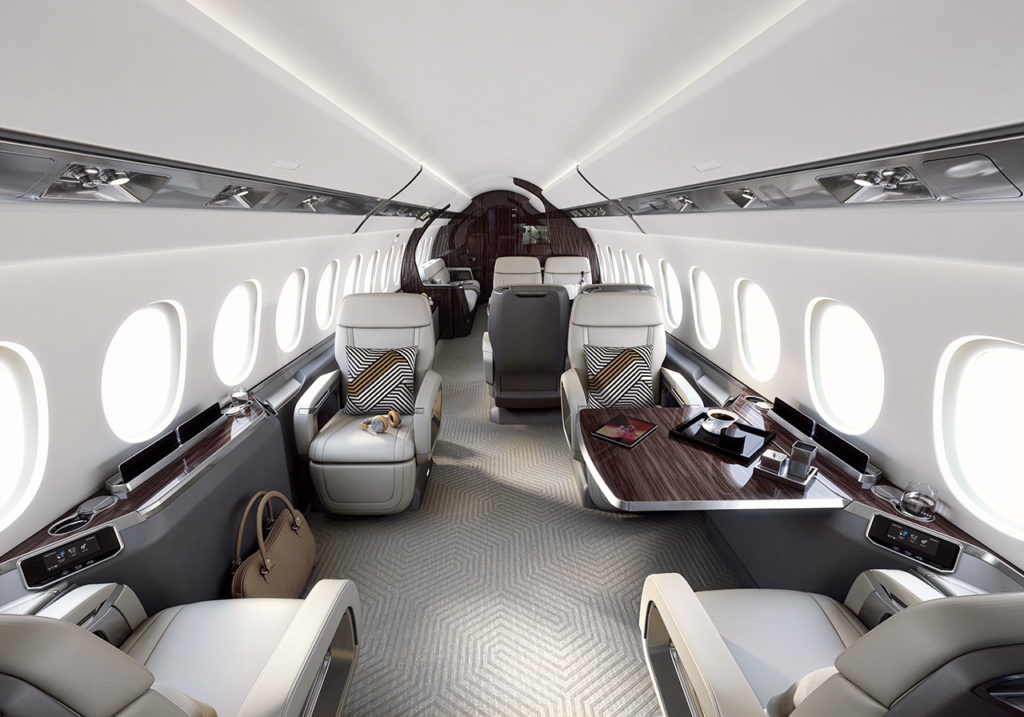
Renewal in cabin
The Falcon 6X is undoubtedly the first aircraft in the range to be designed around the cabin, as Eric Trappier points out: “The industry trend is towards more spacious, high-ceilinged interiors, and this is precisely what customers have been asking for in our new Falcons,” he adds. “So we have designed the Falcon 6X around the cabin, to put the passenger at the center, while offering the high performance and flying qualities that customers appreciate with the Falcon. “The center of the design studio, headed by Agnès Gervais, head of interior design at Dassault Falcon, focused on a much more curved style. According to the head of design, it responds to the aesthetic aspirations of the moment with, in particular, the integration of technology into the forms, in order to purify the lines as much as possible. In addition, the design studio emphasized the lighting effect, as Agnès Gervais points out: “We paid particular attention to light and color, especially at the entrance. “The skylight, the zenithal electro chromatic window at the entrance of the aircraft, and the 28 windows, 10% larger than those of the Falcon 8X, running along the fuselage, provided the right balance between contrast and luminosity. The strength of this design, reinvented for the occasion, marks this large interior space of 52.2 m3, which can be divided into three living areas. The aft design allows, among other things, the layout of a personal suite with the possibility of transforming the seat into a bed. The crew is not forgotten, since Dassault offers an optional crew rest area at the front of the aircraft for long-distance flights.
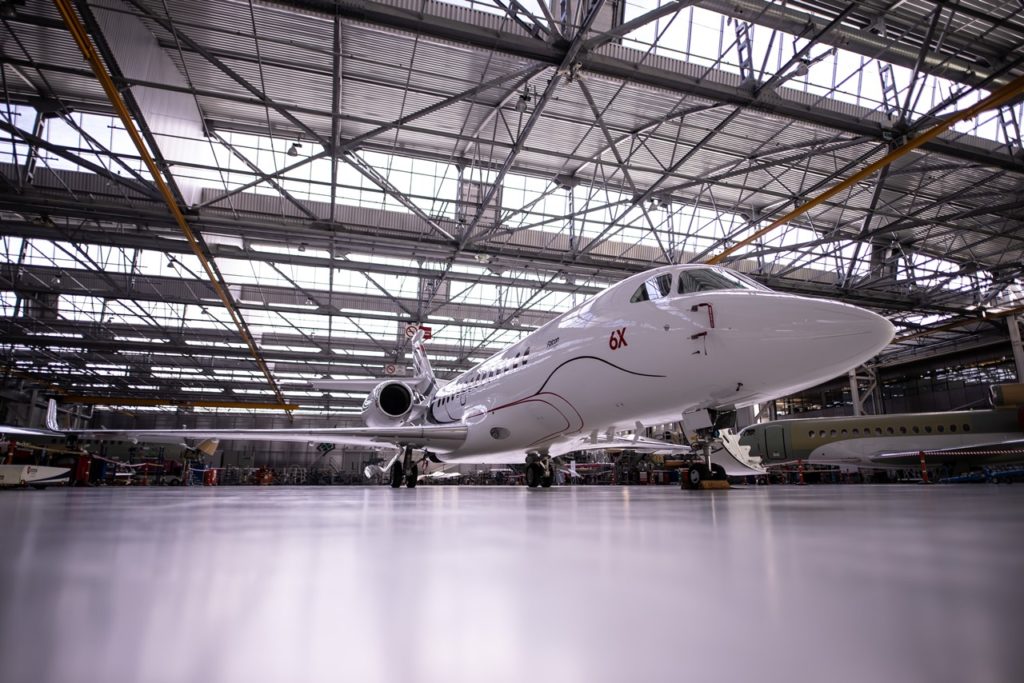
For Dassault Aviation, the Falcon 6X Roll Out is crucial in the face of competition. With a cabin that perfectly meets market expectations and the flexibility of use that has made the aircraft manufacturer famous, the Falcon 6X, with a unit price of $47 million, is the flagship of the manufacturer’s catalog, and certainly one of the most promising aircraft in terms of sales in the large cabin market segment. There remains the much-anticipated first-flight phase, scheduled for the first quarter of 2021.

